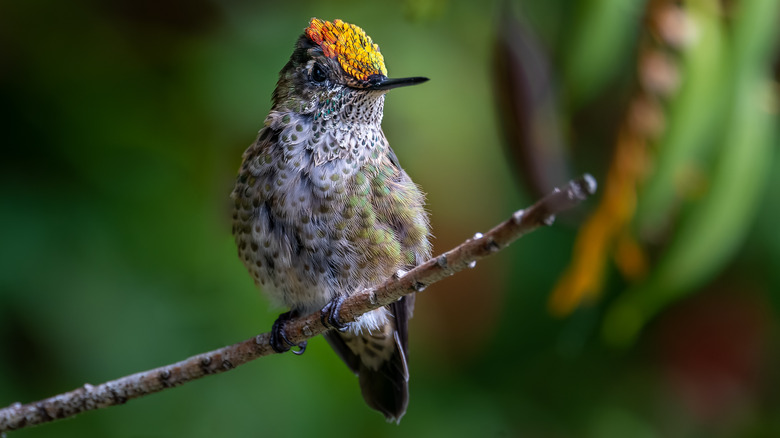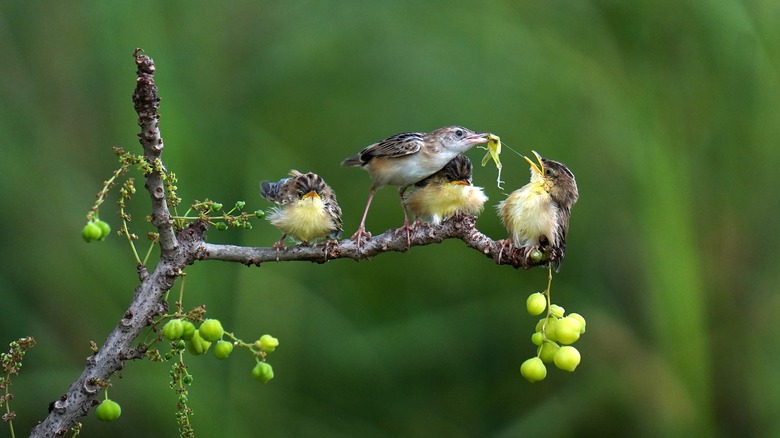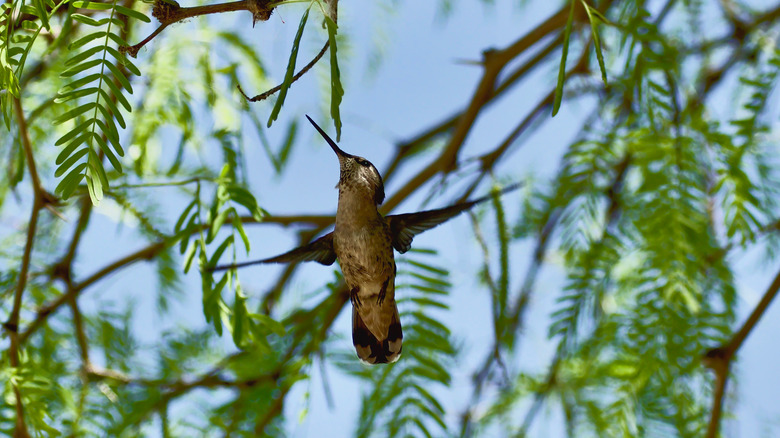Hummingbirds Love This Liquid In Your Garden When They Can't Get Nectar
Hummingbirds are renowned for their love of nectar, but did you know they have a clever backup plan when flowers are scarce? These tiny birds are resourceful, and when nectar (including homemade hummingbird nectar) isn't available, they turn to tree sap. Certain trees, such as maples and birches, produce sap that seeps from wounds in the bark or from holes made by animals like woodpeckers. This sap provides a sweet treat to hummingbirds, providing them a much-needed sugar fix.
Though it might sound unusual, tree sap can be a lifesaver, especially in early spring when flowers are still scarce. With their incredibly high metabolisms, hummingbirds require vast amounts of energy daily. Nectar, rich in sugar, supplies the quick energy they need to sustain their rapid wing beats and hovering flight. When flowers aren't in bloom or are insufficient in number, sap wells often remain accessible, making them a reliable food source. This sweet, energy-packed alternative helps hummingbirds maintain their high metabolism even when their usual food sources are limited.
A sweet treat with a protein-packed bonus
While the sugary goodness of tree sap makes it a great substitute for nectar, it also offers a bonus — protein. Insects such as ants, aphids, and beetles also feed on tree sap. When hummingbirds spot these insects on the sap, it turns into a two-for-one treat for them, as these creatures are also part of their diet. Protein, including that from insects, is especially important for hummingbirds as they regurgitate it to feed their young. What baby hummingbirds eat is crucial for their development, and this protein-rich diet helps ensure they grow strong and healthy. The amino acids found in protein also help build and repair tissues, making it crucial for both the birds' health and the growth of their offspring. By consuming these insects along with the sap, hummingbirds are able to meet their nutritional requirements more efficiently.
Tree sap's dual-purpose value can indeed be a game-changer in environments where nectar and insects are hard to come by. In such cases, it's a reliable food source that helps hummingbirds stay energized and healthy, even when their usual snacks aren't around. It's also another way these little birds show how adaptable and clever they are.
Which trees with sap to plant in your garden
Maple trees are a top choice — sugar maples, in particular, are known for their sap, which is rich in sugars. Plus, maple trees are relatively easy to grow and maintain, making them a great addition to most gardens. Birch trees are another great option, especially yellow birch, which produces sap that's popular for making edible syrup. Birch trees are also visually striking, with their unique bark adding texture and interest to your garden.
Another tree to consider is the hickory tree. While hickory sap isn't as sweet as maple or birch, it still attracts hummingbirds because it hosts many insects that these birds feed on. Hickory trees are also great for creating a habitat that supports other wildlife, adding even more diversity to your garden.
Planting these trees can make your garden a year-round hummingbird haven. In the early spring, before your flowers start blooming, these trees will be ready to provide sap, ensuring that the hummingbirds in your area have something to eat. Plus, they add beauty and shade to your garden, making them a win-win for both you and the birds.


